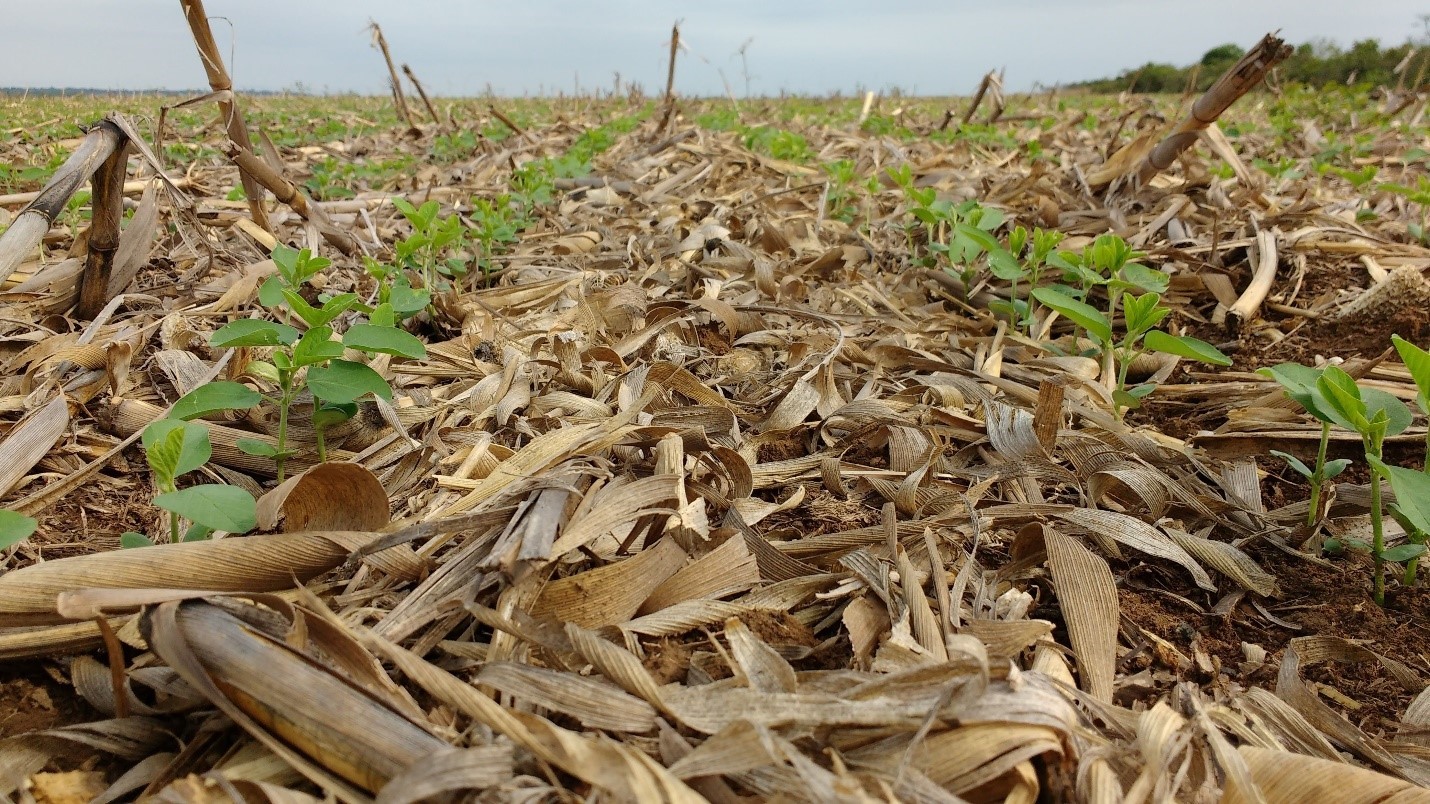


Sustainable management practices help restore soil health and promote carbon sequestration (photo: CCARBON)
Published on 05/16/2025
Agência FAPESP* – A study published in the journal Frontiers in Sustainable Food Systems points to the potential for the Americas to offset some of its greenhouse gas emissions by adopting sustainable agricultural management practices that restore soil health and sequester carbon.
Soil is seen as a fundamental resource that supports services essential to sustaining life. In addition to food production, it contributes to water purification, biodiversity, pollutant neutralization and climate regulation. The latter is mainly due to organic carbon sequestration, a process by which plants remove carbon dioxide (CO2) from the atmosphere and fix it in the soil by depositing organic waste.
In natural systems, the absence of anthropogenic disturbance reduces the dynamics of soil organic carbon. In agricultural systems, on the other hand, the frequent adoption of management practices and changes in the dynamics of residue addition have a direct impact on carbon storage. In this sense, it is essential to assess the impact of different management practices on the potential for carbon sequestration in soils, especially given the need to expand systems capable of contributing to climate change mitigation.
The adoption of good management practices, such as no-till farming, restoration of degraded pastures and integrated agricultural production systems, are widely recognized in the literature as practices that have the potential to promote soil carbon sequestration. Widespread adoption of these strategies could therefore represent a major opportunity for agricultural systems to contribute to climate change mitigation.
In the Americas (North, Central, South, Andean and Caribbean), the area of agricultural systems is estimated to be about 1.11 billion hectares. Although this area represents major potential for large-scale expansion of good management practices, little is known about the impact of adopting these different management practices on soil carbon levels in these different regions.
This was the context that motivated researchers from the Luiz de Queiroz College of Agriculture of the University of São Paulo (ESALQ-USP), the Center for Carbon Research in Tropical Agriculture (CCARBON), the Inter-American Institute for Cooperation on Agriculture (IICA) and the Ohio State University (United States) to develop the study Carbon farming in the living soils of the Americas.
According to Carlos Eduardo Cerri, professor at the Department of Soil Science at ESALQ-USP and coordinator of CCARBON – a FAPESP Research, Innovation and Dissemination Center (RIDC) – the objective of the work was “to understand the availability of information related to the impact of the adoption of good agricultural management practices on soil carbon dynamics in the Americas, as well as to estimate the potential for carbon sequestration given the adoption of potential practices on a large scale.” The work was based on an extensive review of the available literature on the subject, which included more than 13,000 papers.
According to Maurício Cherubin, also a professor at the Department of Soil Science at ESALQ-USP and vice coordinator of CCARBON, the adoption of the no-till system, the restoration of pastures and the expansion of integrated systems in 30% of the agricultural area (about 334 million hectares) would make it possible to reduce about 40% of greenhouse gas emissions from the agricultural sector in the period.
According to the authors, these results are very promising, and could even be improved by adopting more efficient practices to promote carbon sequestration or by increasing the area where good practices are applied.
According to Muhammad Ibrahim, the IICA’s Director of Technical Cooperation, this landmark study is very important for helping the different countries and regions of the continent define programs and commitments to combat climate change. On the other hand, it highlights the need for new data generation efforts to reduce uncertainties in estimates of soil carbon sequestration potential for all regions, but especially in Central America, the Caribbean and the Andean region.
The work also highlighted the need to standardize sampling protocols to include at least the 0-30 centimeter (cm) soil layer and preferably deeper layers (up to 100 cm).
According to the researchers, standardizing the information collected is an important step towards refining the information available, which is essential for reducing uncertainties and calculations such as those presented in the published study. Despite the limitations encountered, the authors point out that the results obtained represent an important step towards directing the application of resources needed to expand monitoring initiatives, as well as prioritizing areas where the availability of information is still low.
The article “Carbon farming in the living soils of the Americas” can be read at: www.frontiersin.org/journals/sustainable-food-systems/articles/10.3389/fsufs.2024.1481005/full.
* With information from CCARBON.
Source: https://agencia.fapesp.br/54762